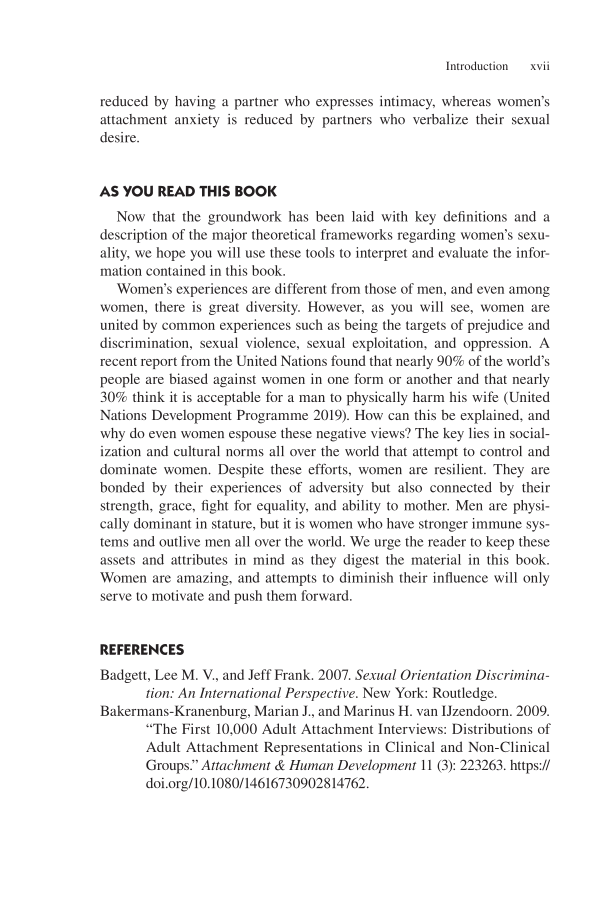Introduction xvii reduced by having a partner who expresses intimacy, whereas women’s attachment anxiety is reduced by partners who verbalize their sexual desire. AS YOU READ THIS BOOK Now that the groundwork has been laid with key definitions and a description of the major theoretical frameworks regarding women’s sexu- ality, we hope you will use these tools to interpret and evaluate the infor- mation contained in this book. Women’s experiences are different from those of men, and even among women, there is great diversity. However, as you will see, women are united by common experiences such as being the targets of prejudice and discrimination, sexual violence, sexual exploitation, and oppression. A recent report from the United Nations found that nearly 90% of the world’s people are biased against women in one form or another and that nearly 30% think it is acceptable for a man to physically harm his wife (United Nations Development Programme 2019). How can this be explained, and why do even women espouse these negative views? The key lies in social- ization and cultural norms all over the world that attempt to control and dominate women. Despite these efforts, women are resilient. They are bonded by their experiences of adversity but also connected by their strength, grace, fight for equality, and ability to mother. Men are physi- cally dominant in stature, but it is women who have stronger immune sys- tems and outlive men all over the world. We urge the reader to keep these assets and attributes in mind as they digest the material in this book. Women are amazing, and attempts to diminish their influence will only serve to motivate and push them forward. REFERENCES Badgett, Lee M. V., and Jeff Frank. 2007. Sexual Orientation Discrimina- tion: An International Perspective. New York: Routledge. Bakermans-Kranenburg, Marian J., and Marinus H. van IJzendoorn. 2009. “The First 10,000 Adult Attachment Interviews: Distributions of Adult Attachment Representations in Clinical and Non-Clinical Groups.” Attachment & Human Development 11 (3): 223263. https:// doi.org/10.1080/14616730902814762.
Document Details My Account Print multiple pages
Print
You have printed 0 times in the last 24 hours.
Your print count will reset on at .
You may print 0 more time(s) before then.
You may print a maximum of 0 pages at a time.










































































































































































































































































































